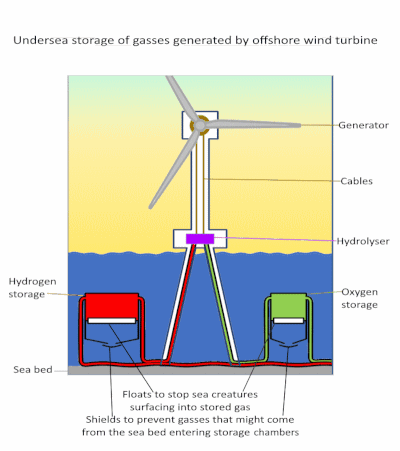And why not oxygen as well?

There’s plenty of room down there, so considerable volumes of hydrogen and oxygen could be stored in “bells” anchored to the sea bed close to individual wind or tidal flow turbines. The intermittent energy is used to generate hydrogen and oxygen directly. The energy would be piped to shore on demand rather than instantly by electric cables.
The wind turbine could be designed to generate DC which would feed a number of electrolysis cells in series with a switching system that varies the number of cells to maximise the power efficiency. This would mean that the speed of rotation of the turbine no longer has to fixed by the AC frequency but can be controlled to maximise the overall efficiency.
The hydroyser cells are housed in a cabin, just above the highest waves, so that the equipment and mantainace staff are protected from the weather.
Energy can be transmitted to shore by a number of pipes rather than cables which would be cheaper and possibly less liable to catastrophic damage.
More heat can be obtained for high temperature industrial processes like steel by burning hydrogen in oxygen rather than air because the energy is not wasted on heating the nitrogen in air. At the melting point of iron about two thirds of the energy would be wasted.
